
Added: Friday, September 7th, 2012
USGS
While Hurricane Isaac has passed, scientific work to understand the storm’s impact on Gulf Coast states continues. Read more

Added: Saturday, September 1st, 2012
By Melanie Gade, Hannah Hamilton and Alex Demas
Real-time map showing the extent of flooding (black dots) and drought (red dots) in the U.S. Read more

Added: Tuesday, August 28th, 2012
USGS
USGS scientists, engineers, and technicians are working along the Gulf coast in response to Hurricane Isaac. Read more

Added: Saturday, August 25th, 2012
By: Hannah Hamilton and Melanie Gade
The U.S. Geological Survey is keeping careful watch as Tropical Storm Isaac continues to track northwest toward the west coast of Florida and the Gulf of Mexico. Read more

Added: Monday, August 13th, 2012
By: Jon Campbell
Fifteen years of data illuminate complex interactions driving land change in Puerto Rico. Read more

Added: Thursday, July 26th, 2012
By: Kara Capelli, Diane Noserale, and Scott Phillips
USGS scientists look to see if water quality is improving. Read more

Added: Monday, July 16th, 2012
By: Kara Capelli, Jenn LaVista, Jess Robertson
The majority of the nation is facing dry conditions; in most areas drought conditions are expected to persist or intensify. Read more

Added: Thursday, June 21st, 2012
By: Ari Massefski and Kara Capelli
This year, a large dead zone again threatens the Gulf of Mexico. Read more

Added: Monday, June 4th, 2012
By: David Hebert, dhebert@usgs.gov
Please comment on the USGS’ draft science strategies! Read more

Added: Wednesday, May 30th, 2012
By Kara Capelli and Howard Perlman
Are you surprised the water bubbles look so small? Read more

Added: Thursday, May 17th, 2012
By: Kara Capelli
USGS Details how climate change could affect water availability in 14 U.S. Basins. Read more
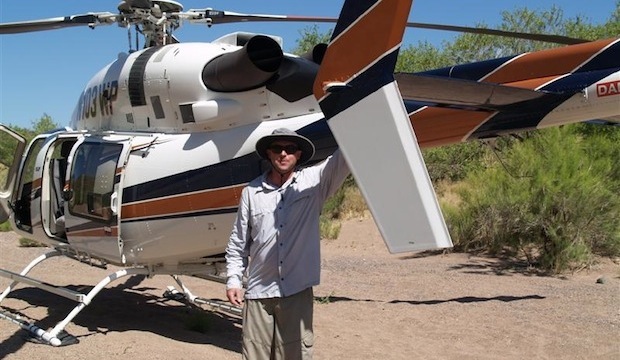
Added: Tuesday, May 1st, 2012
By Travis Gibson
Travis Gibson shares insight into the life a USGS hydrologic technician for one of the USGS water science centers out west. Read more

Added: Friday, April 6th, 2012
By Kara Capelli
The USGS plays an integral role in the new U.S. Water Partnership, which will bring together public and private resources to address water challenges around the world.

Added: Monday, April 2nd, 2012
by Catherine Puckett
Timing is everything! Consider helping track changes in spring’s arrival
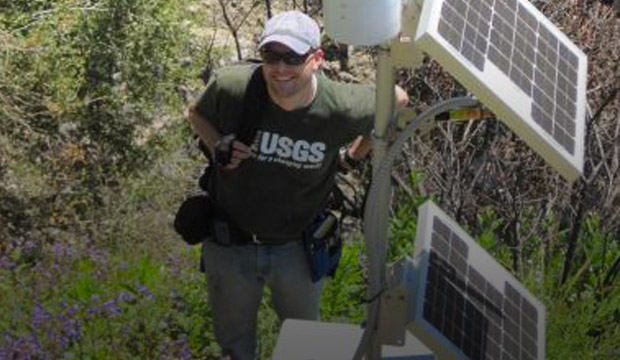
Added: Monday, April 2nd, 2012
By Robert Leeper
Meet one of the next generation of USGS physical scientists.

Added: Wednesday, March 14th, 2012
By Kara Capelli
Flood Safety Awareness Week is March. 12-16. What can you do to prepare?

Added: Tuesday, March 13th, 2012
By Kara Capelli and Kevin Dennehy
National Groundwater Awareness Week is Mar. 11-17, 2012. See how USGS science is connecting groundwater and surface water.

Added: Friday, March 9th, 2012
By Christina Nyquist
Since Japan’s March 11, 2011, Tohoku earthquake and subsequent tsunami, scientists at the USGS have learned much to help better prepare for a large earthquake in the United States.

Added: Wednesday, March 7th, 2012
By Catherine Puckett
Five USGS employees honored with Distinguished Service Awards for their service to the nation
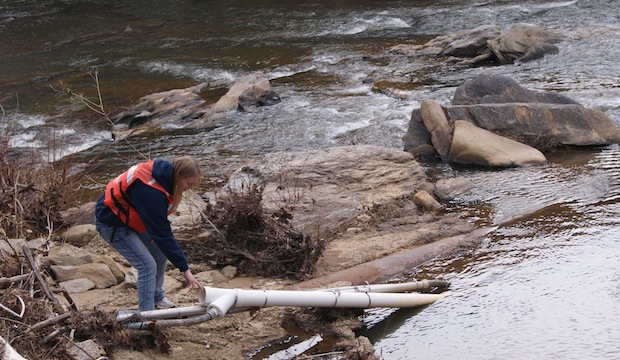
Added: Friday, March 2nd, 2012
Kerry Caslow
Meet a member of the next generation of USGS hydrologic technicians.

Added: Thursday, March 1st, 2012
Kerry Caslow
Meet a member of the next generation of USGS hydrologic technicians.

Added: Monday, February 27th, 2012
By Hannah Hamilton & Catherine Puckett
It’s National Invasive Species Awareness Week. Did you know invasive species cost our country more than 100 billion dollars each year? Get to know America’s ten top invaders this week.

Added: Wednesday, February 15th, 2012
Kara Capelli and Jeffrey Fischer
Groundwater in aquifers on the East Coast and in the Central U.S. has the highest risk of contamination from radium, a naturally occurring radioactive element and known carcinogen.

Added: Monday, February 13th, 2012
The proposed USGS budget reflects research priorities to respond to nationally relevant issues, including water quantity and quality, ecosystem restoration, hydraulic fracturing, natural disasters such as floods and earthquakes, and support for the National Ocean Policy, and has a large R&D component.

Added: Monday, February 13th, 2012
Jennifer LaVista
Four new reports examine the contaminants polycyclic aromatic hydrocarbons (PAHs) found in house dust, streams, lakes, soil, and air.

Added: Wednesday, February 8th, 2012
Kara Capelli and Bill Evans
Exploding lakes in Cameroon, Africa, have killed people and livestock. Find out how USGS science is helping prevent such an event from occurring again.

Added: Wednesday, January 4th, 2012
By Josh Latimore
A summer intern turned permanent employee discusses his career path. Most memorable moment

Added: Tuesday, October 11th, 2011
By Cheryl O'Brien and Tania Larson
Oct. 9-15, 2011, is Earth Science Week, themed "Our-Ever Changing Earth," and Oct. 12, 2011, is International Day for Natural Disaster Reduction. Answers to questions posed by a changing world
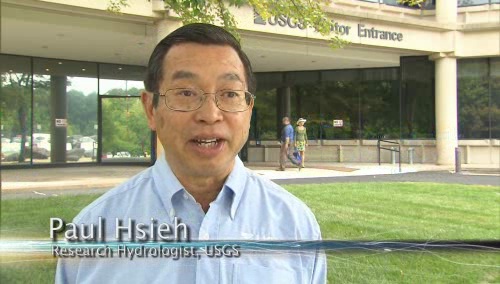
Added: Monday, September 19th, 2011
As the team of responders struggled to end the worst oil spill in our Nation’s history, USGS scientist Paul Hsieh provided the critical scientific information needed to make a crucial decision.

Added: Saturday, September 10th, 2011
After years of planning, the Department of the Interior has begun removing two dams on the Elwha River in Washington. But how will the removal of these dams impact the river’s sediments, waters, and fish?
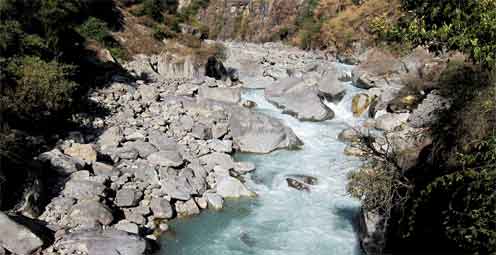
Added: Friday, September 9th, 2011
As a nation, we use more than 75 billion gallons of groundwater each day. September 13 is the National Groundwater Association’s “Protect Your Groundwater Day.” What we can do to ensure we continue to have enough of it?
Added: Monday, August 8th, 2011
USGS scientists are working to characterize the contaminants and habitats for a number of aquatic species along the lower Columbia River.
Added: Wednesday, August 3rd, 2011
The effects of drought are felt throughout the United States and the world, and USGS science has a prominent role in understanding the causes and consequences of this hydrological phenomenon.
Added: Thursday, June 30th, 2011
USGS crews continue to measure streamflow and collect water quality and sediment samples in the Ohio and Mississippi River basins using state-of-art instruments.
Added: Tuesday, June 7th, 2011
Many communities in South Dakota, North Dakota, Montana, Colorado, Wyoming and Iowa are dealing with record floodwaters and bracing for more flooding in the upcoming weeks.

Added: Saturday, March 26th, 2011
The most recent earthquake in Japan affected water levels in groundwater wells all over the country. Water level fluctuations were recorded as far away as Illinois, Virginia, Missouri and Florida.

Added: Monday, March 7th, 2011
Groundwater is one of our most vital natural resources. The USGS studies the quantity and quality of the nation's groundwater. Learn about USGS research in an aquifer near you.
Added: Monday, February 28th, 2011
Learn how 3-D modeling is used to examine groundwater and how this cutting edge science is used to solve tomorrow's problems today.
Added: Monday, February 7th, 2011
The Great Lakes are the largest freshwater system on Earth. However the basin has the potential for local shortages, according to a new basin-wide water availability assessment by the USGS.
Added: Wednesday, February 2nd, 2011
The Department of the Interior has established a new website to find and share websites that provide water conservation and sustainability information.
Added: Monday, December 13th, 2010
The USGS is providing information on arsenic levels at the town level in Maine to protect human health and further promote citizen participation in State well-testing programs.
Added: Monday, November 22nd, 2010
Water Security is the protection of adequate water supplies for food, fiber, industrial, and residential needs for expanding populations, which requires maximizing water-use efficiency, developing new supplies, and protecting water reserves in event of scarcity due to natural, manmade, or technological hazards.
Added: Tuesday, November 9th, 2010
Decreases in stream flow, which are often caused by human activities, affect the integrity of aquatic life in streams, according to a new USGS study.
Added: Tuesday, November 9th, 2010
The USGS and the National Weather Service have developed a new flood inundation map tool that enables management officials and residents to see where the potential threat of flooding is the highest along the Flint River near Albany, Georgia.
Added: Tuesday, November 9th, 2010
Looking for information on natural resources, natural hazards, geospatial data, and more? The USGS Education site provides great resources, including lessons, data, maps, and more, to support teaching, learning, K-12 education, and university-level inquiry and research.
Added: Monday, October 4th, 2010
The Chesapeake Bay has long been an R&R destination for DC residents. However, the watershed’s overpopulation contributes to its decline. Join us when USGS’s Scott Phillips and Peter Claggett discuss new science efforts applied to restoring the Nation's largest estuary on October 6th.
Added: Thursday, September 30th, 2010
The "Flood and high flow" map shows the location of streamgages where the water level is currently above or near flood stage. Find out what rivers and creeks near you are doing.
Added: Monday, September 27th, 2010
Nutrient sources in both agricultural and urban areas contribute to elevated nutrient concentrations in streams and groundwater across the Nation.
Added: Tuesday, June 22nd, 2010
USGS is playing a critical role in the federal government's coordinated Deepwater Horizon response efforts.
Added: Tuesday, June 22nd, 2010
Population growth in the Kabul Basin, Afghanistan, due in part to returning refugees, is estimated to lead to a six-fold increase in drinking water needs by 2057. The USGS has worked in partnership with the Afghanistan Geological Survey to address questions of future water availability.
Added: Tuesday, June 22nd, 2010
Flash flooding is one of the major causes of natural hazard-related deaths in the United States and is hard to predict, but data collected by the USGS is crucial to formulating better predictive models.
Added: Tuesday, June 22nd, 2010
Did you know that contaminant-ridden dust from Africa may be harming coral reefs in the Caribbean? Scientists at the USGS are examining the air in Africa and in the Caribbean to determine what kinds of nutrients, microbes, and contaminants are traveling across the ocean.
Added: Tuesday, June 22nd, 2010
Pharmaceutical manufacturing facilities can be a significant source of pharmaceuticals in surface water. The USGS is working with water utilities to try to reduce the release of pharmaceuticals and other emerging contaminants to the environment.
Added: Tuesday, June 22nd, 2010
The United States Group on Earth Observations (USGEO) is working to connect Earth observations with public health, agriculture, climate, and data management and dissemination.
Added: Tuesday, June 22nd, 2010
The USGS Science Strategy is a comprehensive report to critically examine the USGS's major science goals and priorities for the coming decade. The USGS is moving forward with these strategic science directions in response to the challenges that our Nation's future faces and for the stewards of our Federal lands.